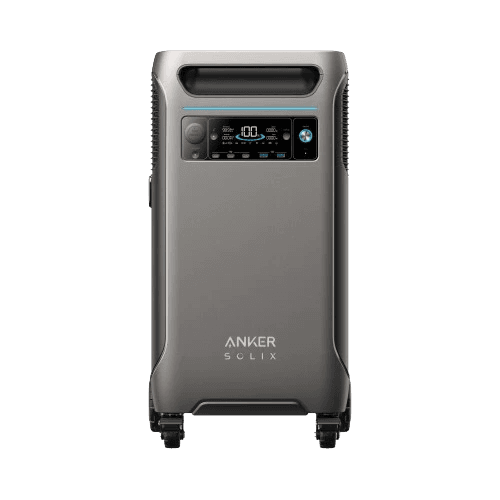Wildlife photography can be an incredibly rewarding profession and hobby for those with a passion for nature and the outdoors. With the right equipment and patience, anyone can capture stunning photographs that highlight the intricate beauty of wildlife in their natural habitats. But how to get into wildlife photography? Let's see the comprehensive guide and tips about wildlife photography.

How to Get into Wildlife Photography
Wildlife photography is a rewarding and challenging profession, but it does require dedication and knowledge to master. Here are some tips for wildlife photography:
Learn the Basics
Whether you’re a beginner or an experienced photographer, familiarizing yourself with the basics of wildlife photography is essential to capturing stunning wildlife shots.
·Shutter speed: Shutter speed is one of the first settings to understand and control when taking wildlife photos. A slow shutter speed will help capture motion blur, while a fast shutter speed will freeze the action and make sure you don’t miss any details.
·Aperture: The aperture controls how much light enters your lens, allowing you to adjust the exposure of your image.
·ISO: ISO is the light sensitivity of your camera and can help you achieve a balanced exposure. You need to understand how ISO affects your images and how to adjust them for different shooting scenarios. If you need to freeze a fast-moving animal, you can reduce the ISO and increase the shutter speed to capture sharp images.
·Composition: Paying attention to the background and composition of each frame is essential when taking wildlife photos. You want to make sure the subject stands out and isn’t lost in busy or cluttered backgrounds.
·White balance: White balance helps ensure that your photos look natural and not too blue or yellow.
·Zoom: Zoom lenses are essential for capturing faraway subjects and focusing on the details. Invest in a good quality lens with an optical zoom of at least 7x or 10x. But it does not always need to zoom in. Sometimes just a wider angle lens can help you to get more of the background and give your shot more depth.
·Good morals: Photographing wildlife requires respect and a certain set of morals. Always be respectful of the animals and their natural habitats, and never disturb them or put them in danger just to get the perfect shot.
Know Your Subject
·Learning about animal behavior: Understanding the behavioral patterns of wildlife can help you anticipate their movements and be in the right place at the right time. For example, if the tiger is growling, you should make sure to keep your distance. And if the bird is chirping, this could be a sign of courtship.
·Studying animal habitat: Knowing where to find your subject is essential for successful nature wildlife photography. Different animals live in different habitats, so studying their environment will give you an edge when it comes to finding them. Knowing the signs of where an animal has been can help you find them in its natural habitat.
· Know the diet: Knowing what an animal eats can help you determine where to find it. For example, if the lion is a carnivore, then it will likely be found near its prey.

Be Well Equipped
You need the right wildlife photography gear to capture stunning shots.
· Camera: Invest in a good-quality camera body and lens so you can take advantage of all the features it has to offer.
·Tripod or monopod: Using a tripod or monopod will help keep your shots steady and reduce vibration, making them sharper and crisper.
·Batteries: Always make sure to pack extra batteries for your camera. Wildlife photography tends to be very battery-intensive, so it’s best to be prepared. A powerhouse battery can be helpful if you’re shooting in remote areas with limited access to power. The Anker 757 PowerHouse is a great option because of its 1229Wh capacity and 1500 wattage.
·Binoculars: Binoculars will help you spot wildlife from far away and determine the best angle for your shot.
·Memory cards: Invest in high-capacity memory cards so you don’t run out of storage space during a shoot.
·Lens cleaning kit: Always carry a lens cleaning kit with you to ensure your lens is free of dirt and dust.
·Filters: Filters can be used to reduce glare, add color saturation, or even soften backgrounds. They are essential for capturing creative shots in different lighting conditions.
·Other Accessories: There are other accessories that you may need depending on the type of wildlife photography you are doing. For example, a flashgun or external light source can help bring out the details of night shots. And teleconverters can be used to get even closer to your subject without losing image quality.

Keep Shooting and Practicing Your Skills
The best way to become a better wildlife photographer is to keep shooting and practicing your skills. Keep learning, experimenting, and refining your technique.
·Try different angles: Experiment with different angles and viewpoints to get creative shots. Try the rule of thirds, shooting from low angles, or using a wide-angle lens to capture the landscape.
·Utilize natural light: Natural light can make all the difference when shooting wildlife. Try using the available light to your advantage by shooting during golden hour or using creative lighting techniques like silhouettes and rim lighting.
·Find other ways to learn more: Join a wildlife photography group or take online courses to learn more about wildlife photography. You can also read blogs or watch tutorials to get inspired and refine your skills.
·Be patient: Wildlife photography often requires a lot of patience. Animals move at their own pace, so don’t rush them! Taking the time to observe and wait for the right moment will help you capture amazing shots.
Conclusion
Now you have a clear view of how to get into wildlife photography and the basics of what you need. It is important to remember that wildlife photography is a journey—it’s not only about the destination. It can be an amazing experience that helps you connect with nature and hone your skills as a photographer. So don’t forget to enjoy the process of learning and exploring! Good luck out there!
FAQ about How to Get into Wildlife Photography
Is Wildlife Photography a Good Career?
Yes, wildlife photography can be a very great career for those who love the outdoors and be willing to spend a lot of time there taking pictures. It takes years of hard work and dedication and skill, but the rewards are usually worth it. You can check out more details about this career on the internet or talk to experienced wildlife photographers to see whether this is good for you.
Is It Hard to be a Wildlife Photographer?
Yes, it can be challenging because you’re taking pictures of the animals on the move. It takes a lot of patience, dedication, and skill to capture amazing images that tell stories. You should also be willing to invest in professional equipment and take the time to learn about wildlife behavior and environmental conditions so you can get the best shots possible.
How Long Does It Take to Become a Wildlife Photographer?
It depends on how much time and effort you're willing to put in. It can take anywhere from months to years of practice and dedication to become a skilled wildlife photographer. It's important to keep learning, experimenting, and refining your technique so you can get the best photos possible.
Be the First to Know






